- Other Fluke companies:
- Fluke
- Fluke Biomedical
- Fluke Networks
- Fluke Process Instruments
Eliminating sensor errors in temperature control loop calibrations
What is a loop calibrator?
Loop calibrators calibrate 4-20 mA loops and are designed with three main functions.
- Measure mA - mA calibrator performs a high accuracy mA measurement in series in a mA loop circuit to properly calibrate a transmitter output.
- Simulate mA - mA calibrator physically replaces a transmitter in a mA loop circuit and simulates the mA output of a transmitter.
- Source mA - mA calibrator physically replaces both transmitter and loop power supply, and sources mA output directly to the PLC controller.
These instruments simulate the loop during the calibration of process instruments such as 20 mA transmitters that measure pressure, temperature, and flow signals in process control systems. Simulating the loop lets process technicians verify the transmitter's performance as part of calibration or troubleshooting.
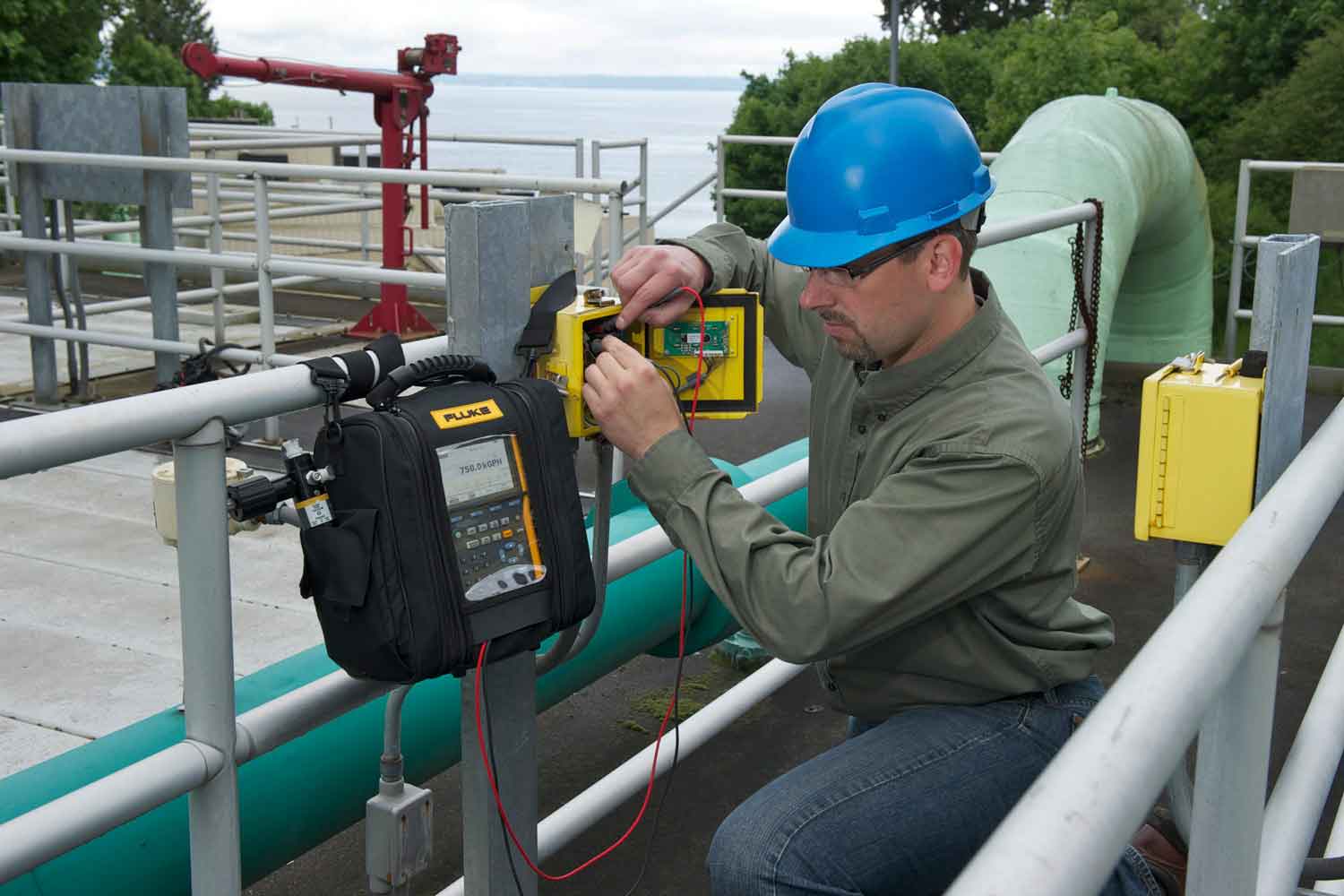
Calibrating a loop is more than just 4 mA to 20 mA
Temperature plays an important role in many industrial and commercial processes. Examples range from sterilization in pharmaceutical companies, metal heat-treatment to ensure optimal strength in aerospace applications, temperature verification in a cold storage warehouse, and atmospheric and oceanographic research. In all temperature measurement applications, the sensor strongly affects the results; unfortunately, many measurements are made without optimizing the system to get the best performance from the temperature transducer.
Significant performance improvement can be realized by optimizing the loop calibration measurement system to better accommodate the unique characteristics of the temperature sensing element. All temperature probes and their sensing elements are unique, with variations in materials, construction and usage, or exposure to different environments. This uniqueness continues throughout the useful life of the sensor, in the form of drift due to mechanical shock and vibration or to contamination of the materials when exposed to the material they are measuring. Only through periodic verification can these differences and changes be accommodated, improving total measurement performance.
The majority of process temperature measurements are performed using a sensing element connected to a transmitter. Figure 1 shows a diagram of a common temperature loop.
In many applications, it is common to verify the elements of the measurement system separately, but in doing so, significant improvements made possible by considering the system as a whole are ignored. One of the main reasons the elements are verified or calibrated separately is that it is often considered to be more efficient. Verifying the measurement component is done simply and quickly with an electronic thermocouple (TC) or resistance temperature detector (RTD) simulator. This approach does not verify the performance of the associated temperature probe, and assumes all probes are identical and closely follow some standard. In practice, no two probes are identical; they all vary from the ideal standard, and over time and usage their characteristics change. Understanding how probes vary from the ideal will allow you to optimize the measurement system to achieve the best performance.
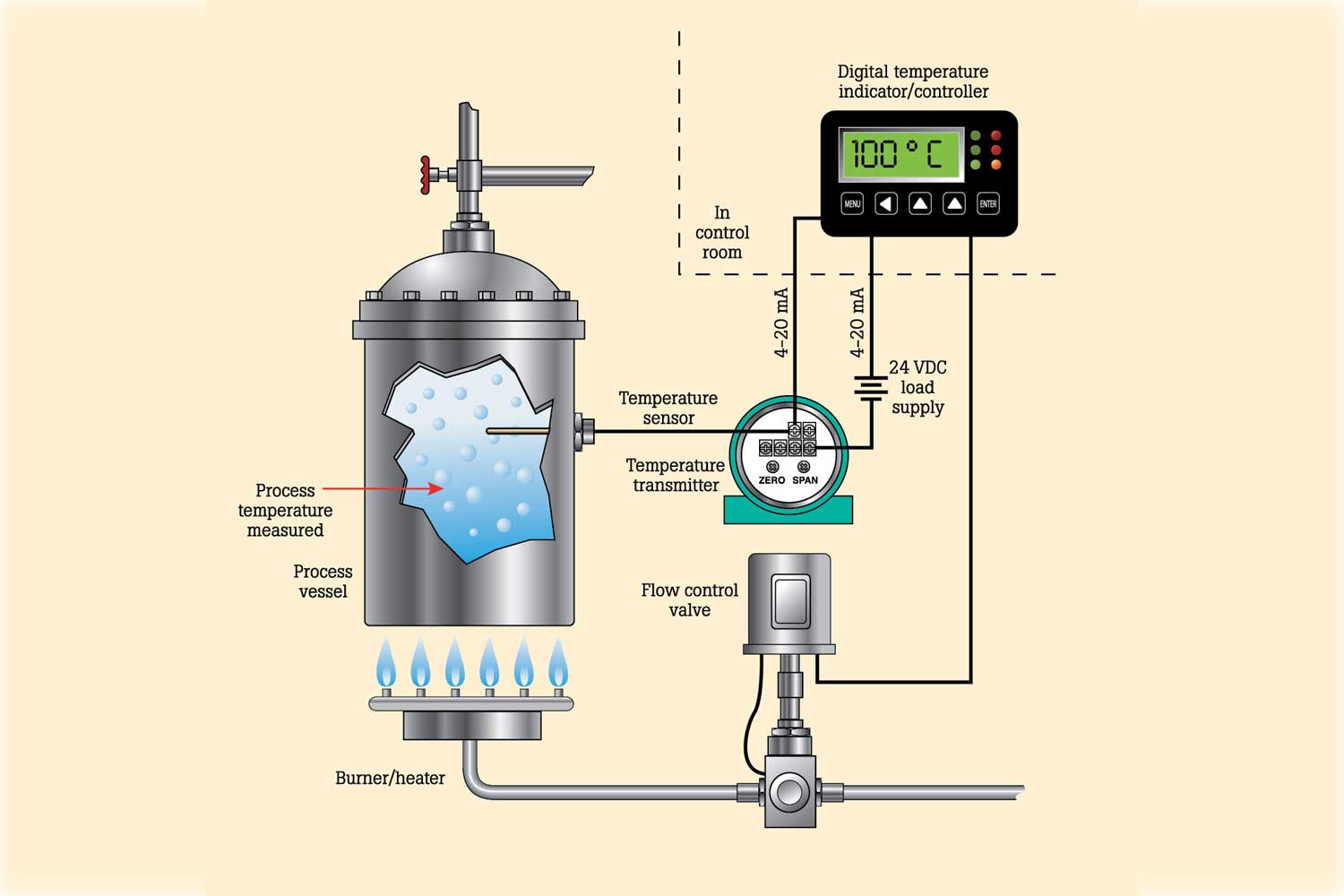
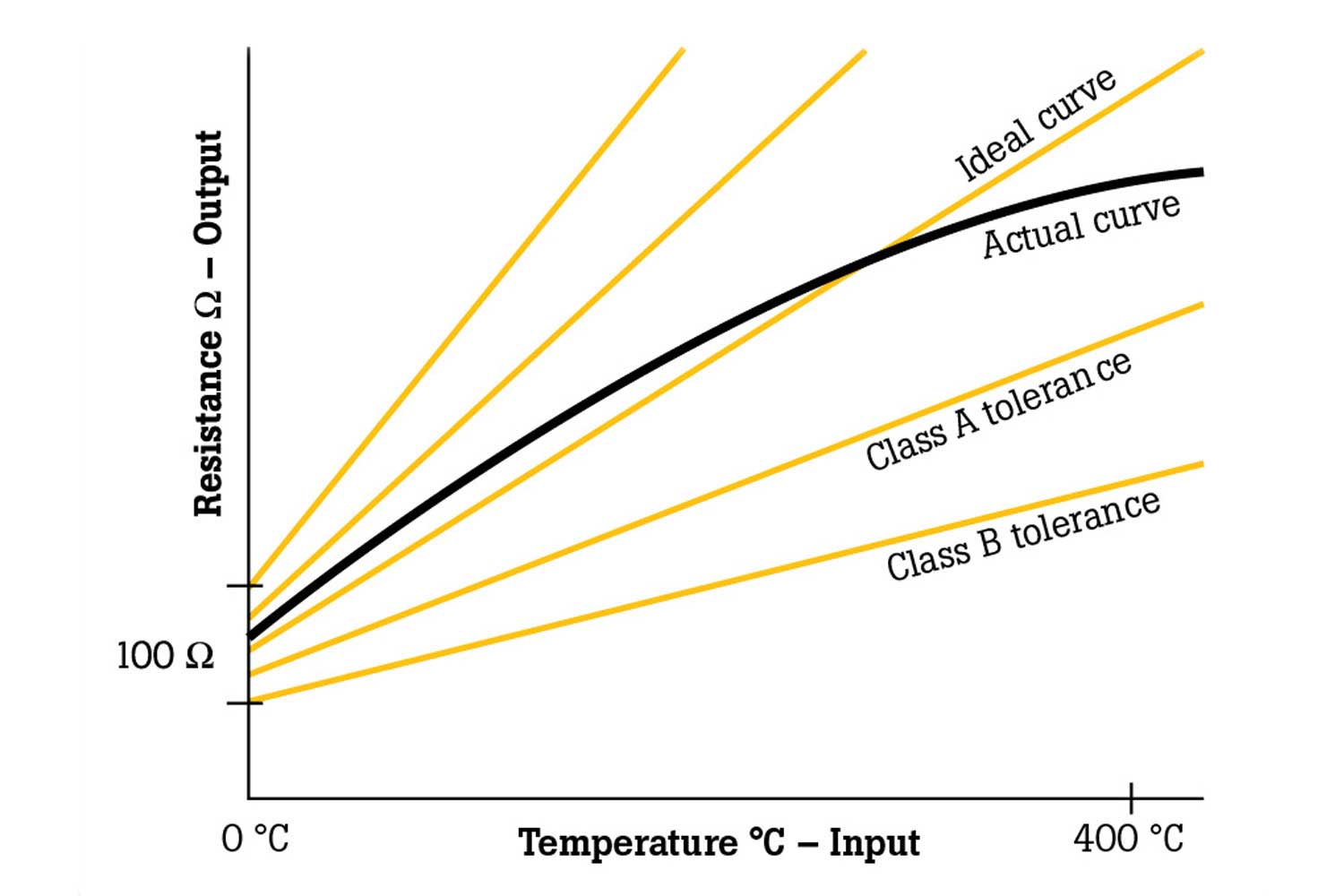
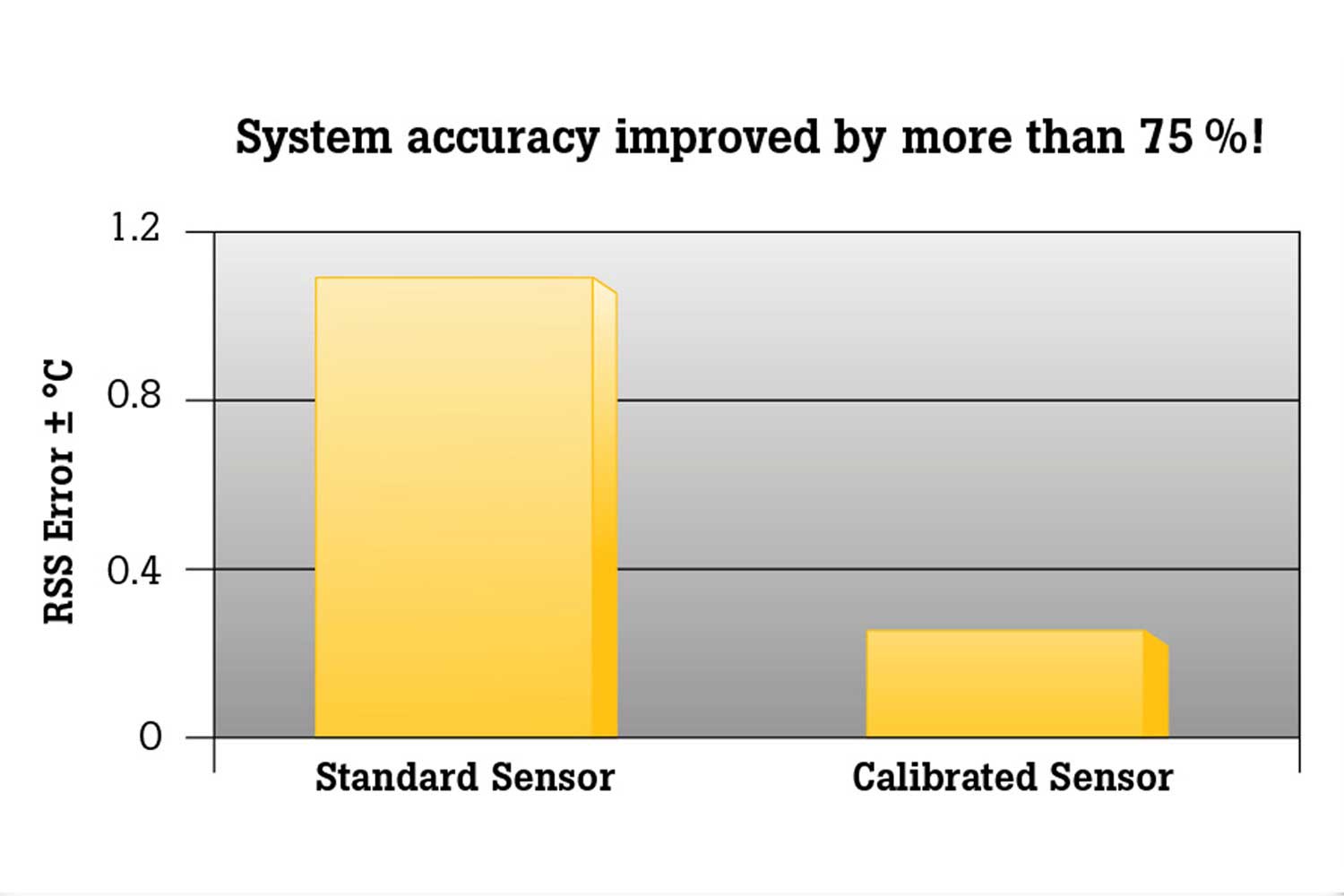
Optimizing performance
Emerson uses the example provided in Table 1 for information on the possible performance improvement of their Model 644H Smart Temperature Transmitter. To achieve this performance improvement, the 644H is given information Callendar Van Dusen Coefficients) that allows it to correct for the unique performance of the temperature sensing element, in this case a standard IEC751 Pt100 sensor.
| System accuracy comparison measuring 150 °C using a Pt100 (IEC751) RTD with a transmitter span of 0 to 200 °C | |||
| Standard RTD | Accuracy | Characterized RTD | Accuracy |
| Rosemount Model 644H | ± 0.15 °C | Rosemount Model 644H | ± 0.15 °C |
| Standard RTD | ± 1.05 °C | Matched (calibrated) RTD | ± 0.18 °C |
| Total system | ± 1.06 °C | Total system | ± 0.23 °C |
Dry-wells and micro-baths are good choices for verifying the performance of temperature probes and other related sensors. But they do not have the capability to calibrate the transmitter’s output or readout and, by themselves, do not allow the entire measurement loop to be optimized. A heat source, combined with an intelligent electronic process calibrator that is capable of calibrating the transmitter and readout, is required if the above performance improvement is to be realized and maintained.
By combining the automating and documenting capabilities of the Fluke 754 Documenting Process Calibrator with Fluke Calibration’s intelligent and stable family of field drywells and micro-baths, you have the capability to test the entire loop. This combination of equipment allows you to easily verify the characteristics of the temperature sensor and measurement electronics. Using this information, the entire loop can be adjusted to optimize system measurement performance. Below are some examples of how to use a loop calibrator and drywell or bath to optimize the performance of your measurement system using these instruments.
The Fluke 754 is connected to a Fluke Calibration dry-well or micro-bath by way of a serial RS-232 interface cable. The heat source is connected to the 754 pressure port and is accessed by the 754 TC/RTD source key. Due to the length of these tests, it is recommended that a fully charged battery or battery eliminator for the 754 be used. A diagram of the connection of this equipment is pictured in Figure 4. (The serial cable may be obtained from either your authorized Fluke distributor or directly from your Fluke Calibration representative.)
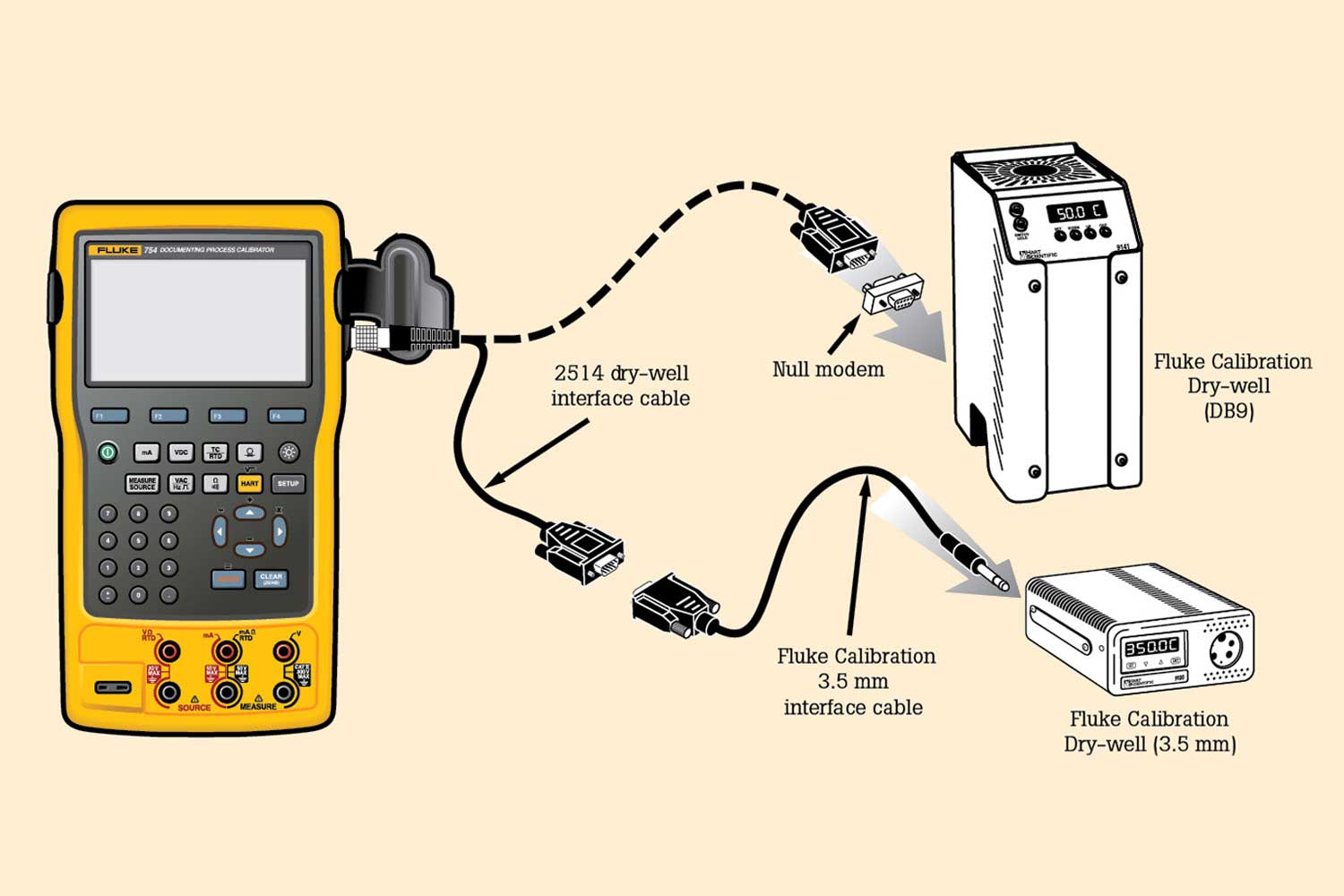
In many process applications, the instrumentation of choice for temperature measurements is a transmitter that accepts the output from the temperature sensor and drives a 4-20 mA signal back to the PLC, DCS or indicator. This example describes one method for verifying performance by calibrating a 4-20 mA transmitter and temperature sensor and offers to optimize this measurement to improve performance.
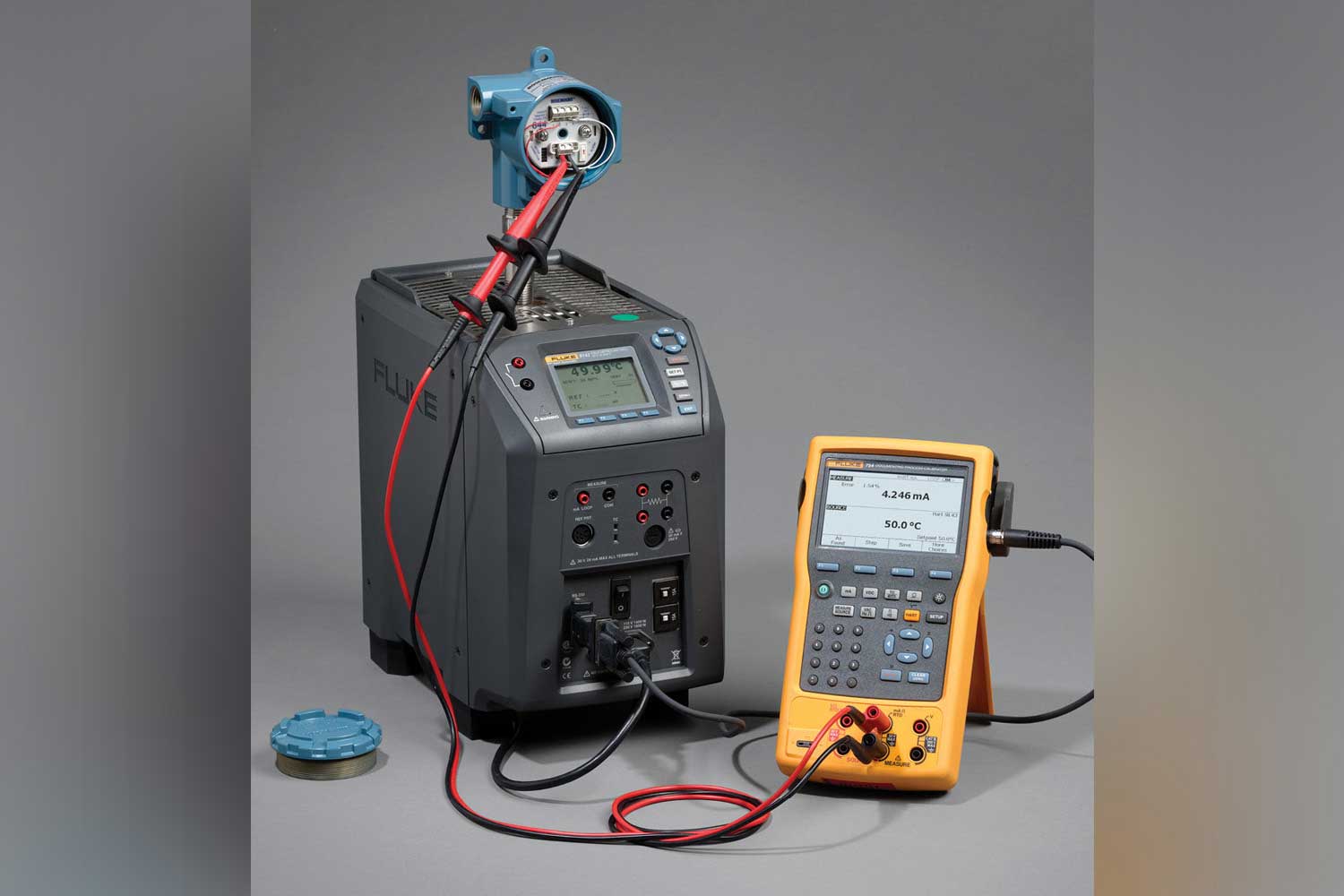
To perform the test of calibrating a 4-20 mA system, the RTD sensor is removed from the process and inserted into the dry block calibrator. The mA connections from the transmitter are connected directly to the 754 Documenting Process Calibrator (see Figure 5). In most applications, this solution provides adequate performance. But if your application includes a uniquely shaped sensor, you might want to consider the use of a micro-bath. If increased heat source accuracy is needed, the use of a reference thermometer combined with the 754’s User-Entered Values feature can be used.
Once connections are made, you are ready to acquire transmitter configuration (if you have a transmitter with HART communications), set the test parameters, and configure the calibrator for mA measurement and dry-well control as the sourcing parameter.
Pressing the HART key on the 754 allows the calibrator to acquire the transmitter configuration from a transmitter with HART communication capability. Following is a sample of this acquired configuration information.
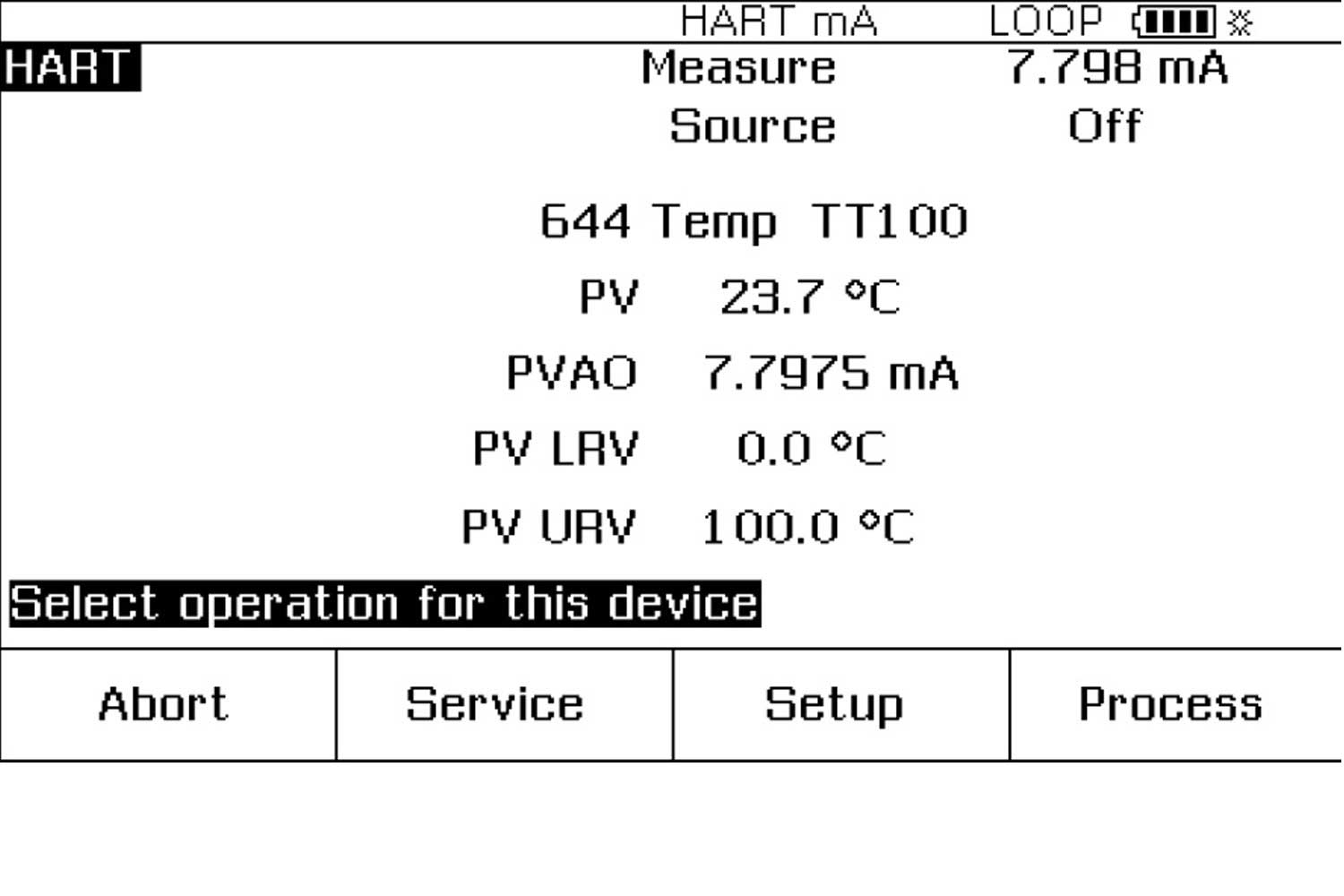
Pressing the HART key on the 754 again presents the following screen with several options for configuring the calibrator to the correct parameters for this test. For the purposes of this example, we’ll use the transmitter configured to output a 4-20mA signal; therefore, the correct configuration of the 754 is to measure mA and source temperature via the dry-well.
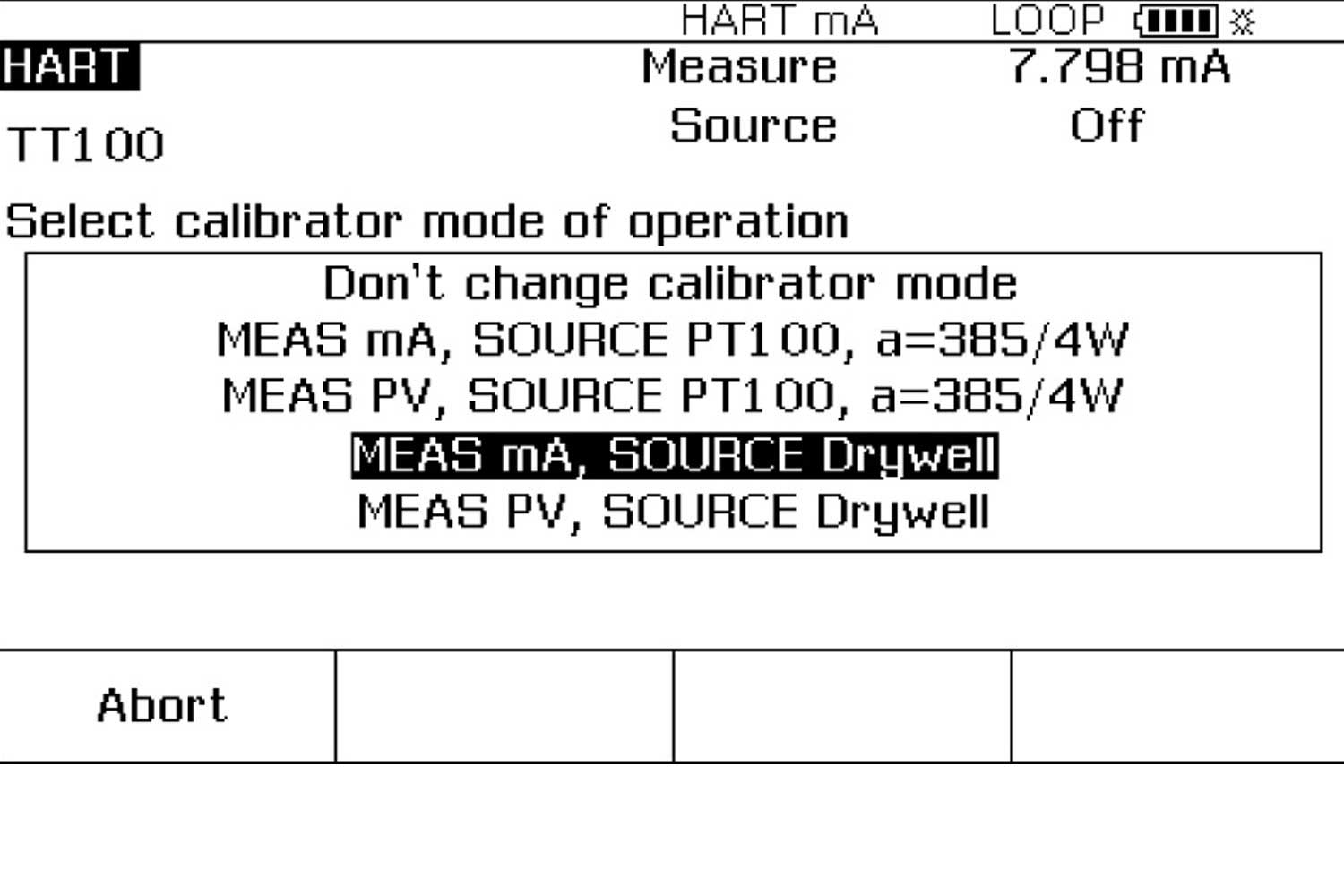
Pressing the AS FOUND soft key on the 754 provides access to parameters needed to configure an automated test. Below is a typical definition that will test the measurement system from 50°C to 150°C sourcing temperatures using a dry-well in ascending order.
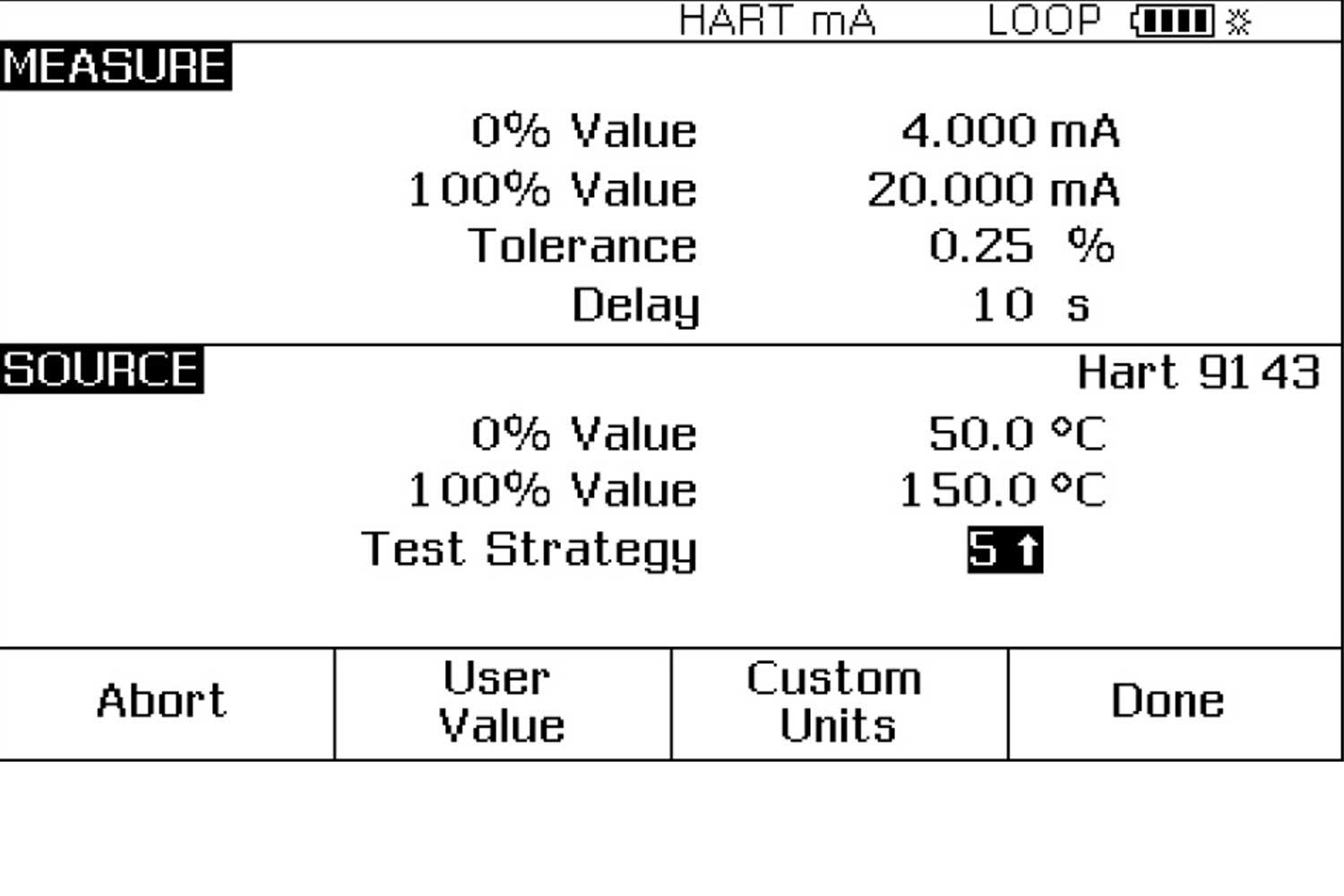
After the test has been defined, the Fluke 754 will take over and run the test, recording the sourced temperature and measured output of the transmitter, in mA. At the end of the test, the results will be displayed on the screen, allowing the test technician to evaluate the results and take corrective action if needed. Following is an example of the results.
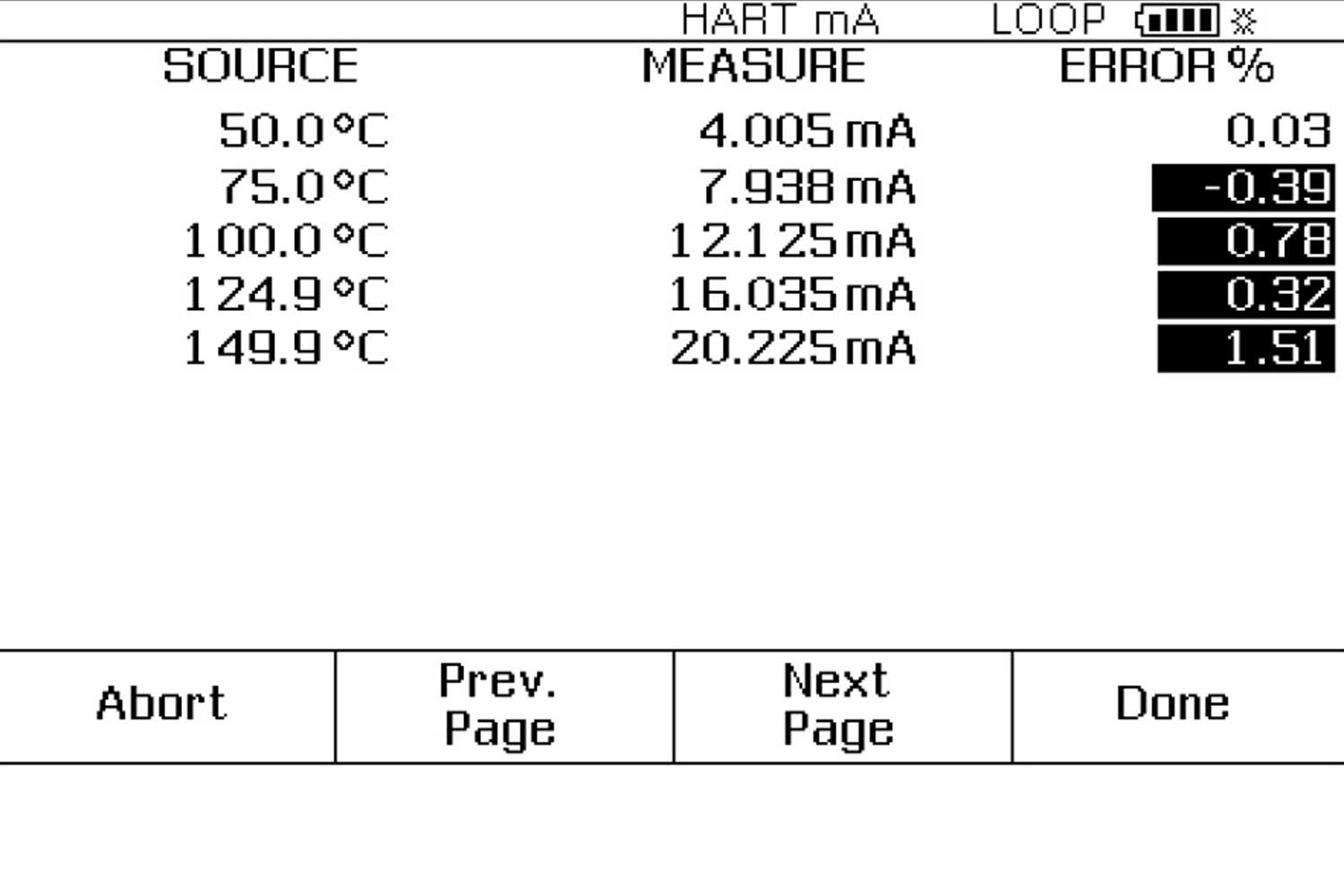
One method of optimizing this system to minimize error is to shift the URV or LRV of the transmitter to the values measured by the 754. With a transmitter with HART capabilities, this is easily done via the 754, by simply entering new values in the HART SETUP screen.
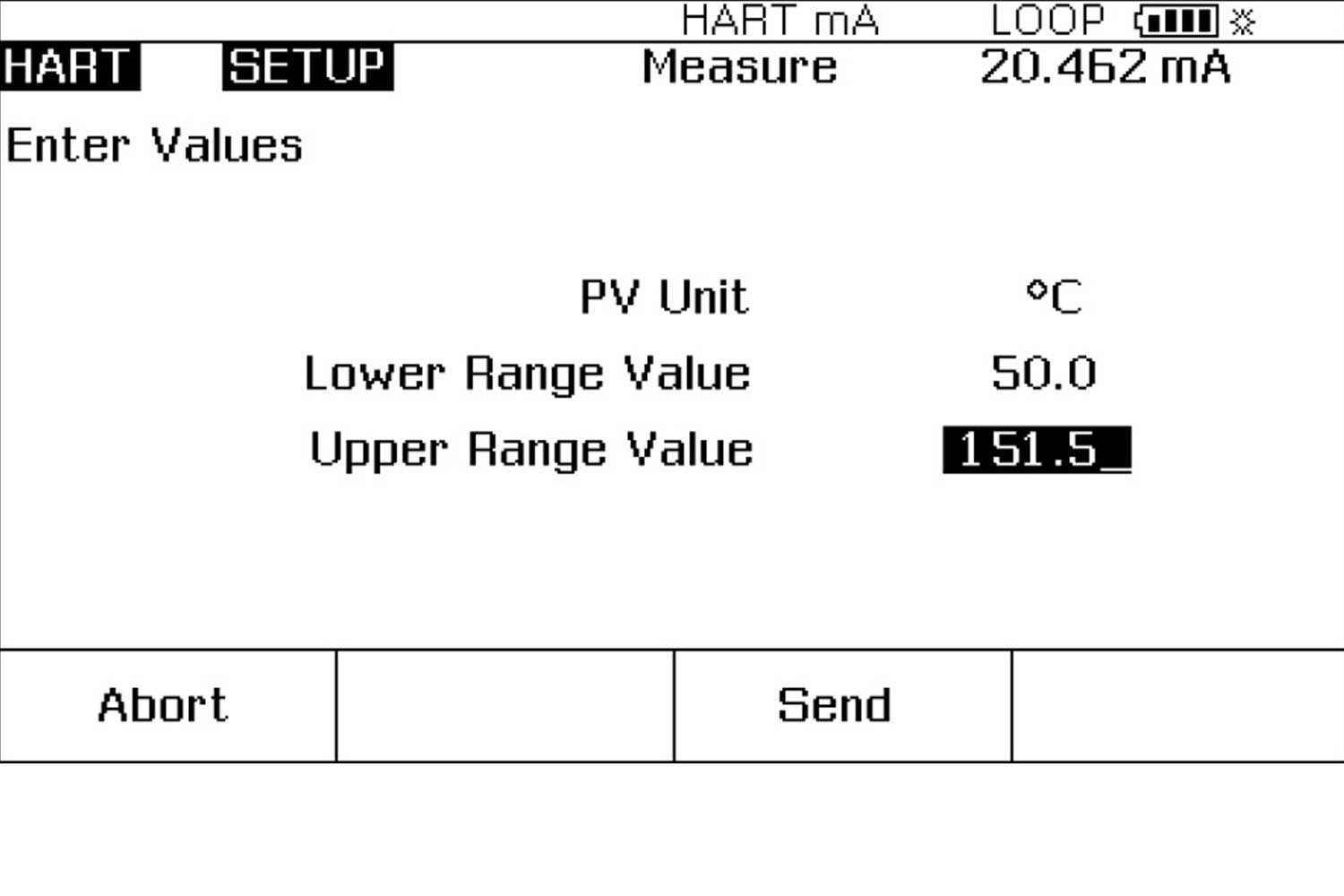
With an analog transmitter, you will need to mechanically adjust the Zero and Span adjustments when sourcing the appropriate temperature values. The 754 has a convenient menu key that allows you to easily set the correct value on the dry-well with a single button press.
Calibrating and adjusting measurement systems using characterized sensors and calibration constants
Another method of reducing uncertainty and optimizing temperature measurement systems is to carefully characterize the temperature sensor, calculate correction coefficients and load these correction coefficients into the measurement equipment. This is the method used in the Rosemount 644H example on the previous page. This method does a better job of reducing the error in the measurement system that comes from the sensor. But it requires transmitters that have a correction or linearization algorithm that can accommodate the sensor. For example, Platinum RTDs typically use the Callendar- Van Dusen (CVD) equation for linearizing the sensor’s output. A characterized sensor will provide unique CVD coefficients that can be input into the transmitter, allowing its conversion algorithm to more closely match the unique characteristics of the sensor.
The Fluke 754 connected with a dry-well can help to collect the necessary information to characterize the sensor, but additional software and resources will be needed to take this data and generate new CVD constants. Examples of the required software include Fluke Calibration’s TableWare. Other software that could be used include Mathcad, Mathematica, Maple or Excel. But these packages require considerable knowledge of the equations used to linearize a sensor and the ability to perform curve-fitting of the collected data.
The method of characterizing a probe is similar to the loop calibration procedure above, but rather than measuring the output of the transmitter, the output of the sensor is connected directly to the 754. This is an example of data collected by a 754 on a temperature sensor.
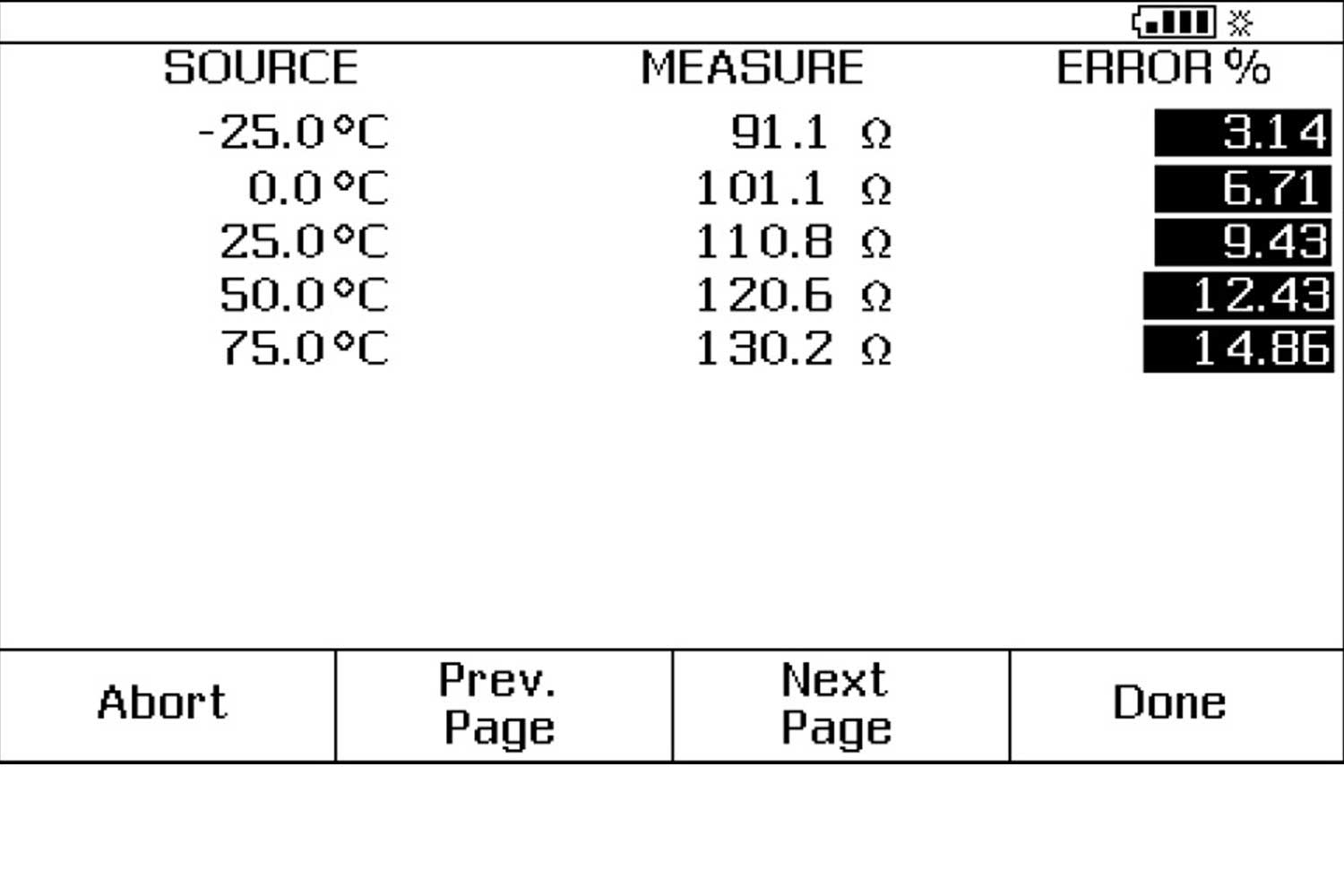
Data like this can be entered into Fluke Calibration’s software using the screens in Figure 6 and then unique CVD constants calculated for that probe. These coefficients can then be entered into a suitable measurement device that allows its linearization to match the characteristics of the probe.
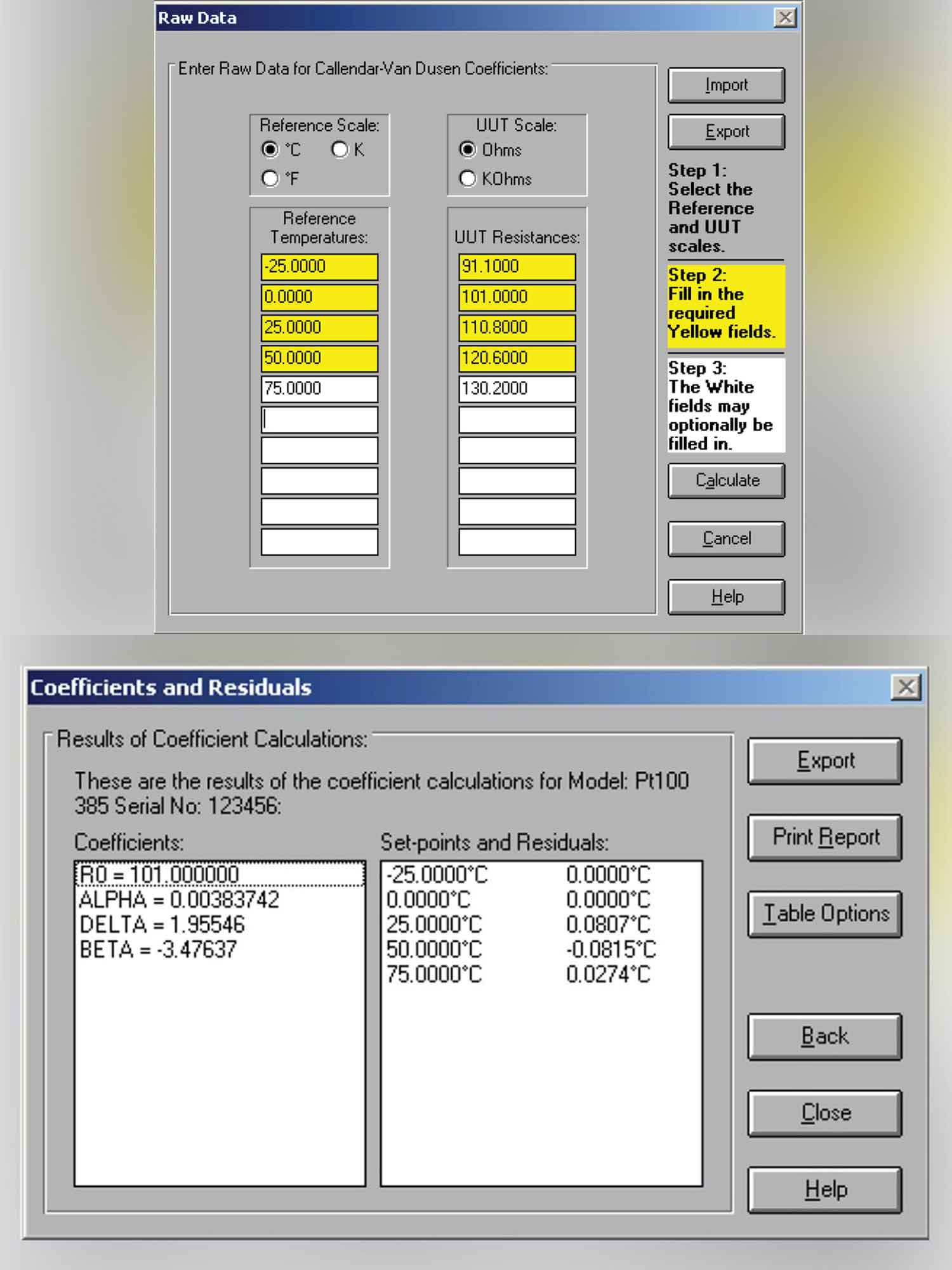
Enhancing the accuracy of a dry well or portable bath
Dry blocks and micro-baths have sensing elements that measure the temperature the device is generating. This temperature measurement is not as accurate as measuring the temperature with a reference RTD probe and readout. By using an external RTD reference probe the known temperature of the dry block or bath can be enhanced significantly versus using the internal sensors. Many dry blocks like the Fluke 9144P have internal measurement circuitry that allows you to directly connect an RTD probe. If the dry well or bath does not have the ability to connect a reference probe, a precision readout with an RTD probe like the Fluke 1523 or 1524 can be used for this purpose. Use of an external reference probe can improve the accuracy setting of your dry block or bath over five times, depending on the accuracy of the reference probe.
Summary
Using a dry-well in combination with a process calibrator allows measurement systems to be verified and adjusted to optimize measurement performance. By verifying the entire measurement system, unique characteristics of the sensing element can be combined with the measurement electronics to minimize measurement error. This can result in a significant reduction in measurement errors. The Fluke 754 Documenting Process Calibrator, combined with a Fluke Calibration dry-well makes this process faster and easier.
Keep reading
- Transmitter Calibration with the Fluke 750 Series Documenting Process Calibrator Application Note
- Best Practices for Temperature Calibration
- Selecting a Dry-Well (Dry-Block) Temperature Calibrator
- Troubleshooting a 4-20 mA loop using mA simulate
- How to Calibrate Your PT100 Temperature Sensor and other Probes In-House
- Home
- Products
- New Products
- Electrical Calibration
- RF Calibration
- Data Acquisition and Test Equipment
- Temperature Calibration
- Humidity Calibration
- Pressure Calibration
- Flow Calibration
- Process Calibration Tools
- Calibration Software
- Service and Support
- All Calibration Instruments
- Handheld Test Tools
- Purchase Info
- News
- Training and Events
- Literature and Education
- Service and Support
- About Us

